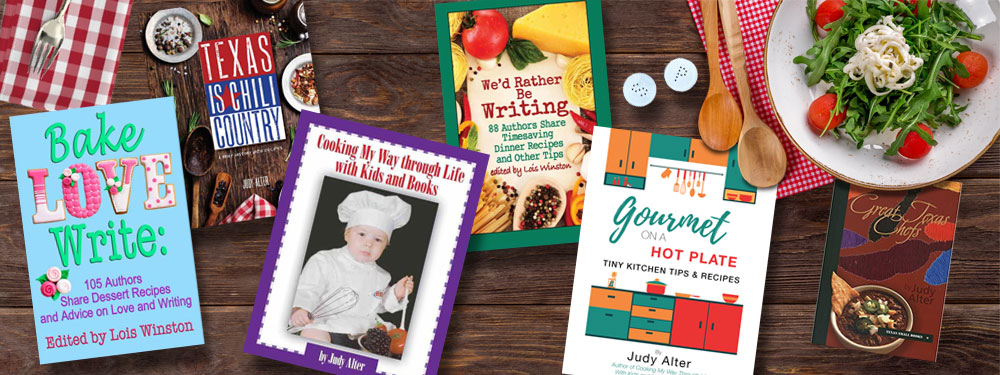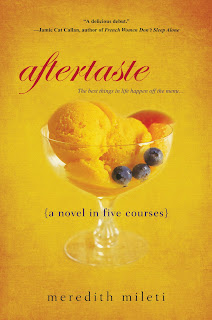On New Year's Day I'll be serving Hoppin' John to family and friends. In case you don't know, Hoppin John is a stew-like dish of black-eyed peas and ham and Cajun spices served over rice. (My kids called it Hoppin Uncle John after a favorite uncle.) It combines ham and black-eyed peas, those two foods said to bring good luck and wealth in the coming year. Coming from the North, I'd never heard of this tradition until I'd been in Texas several years. That's because it originated, in this country, in the American South. But now I feel uneasy if I don't have my ham and black-eyed peas. Today I read a blog about New Year celebrtions in Italy--it involves red underwear, but let's not go there. Italians eat sausage and lentils--the lentils are supposed to bring wealth because they're shaped like coins.
That got me to thinking about cross-cultural foods. My kids were discussing weinerschnitzel the other day, and I pointed out that almost every culture has a form of breaded meat. Weinerschnitzel is of course Austrain and made of veal, pounded flat, dipped in bread and egg.. But in Central and South America, they serve various versions of milanesa--the name indicates an Italian origin or at least European. Throughout much of Europe the dish is known as schnitzel and may be of chicken, veal or beef. In Denmark it is served topped with a "boy" (dreng in Danish)--lemon slices, horseradish, capers, and anchovy slices. In Oriental countries particularly Japan it is breaded with panko crumbs.
But wait, I've strayed from my topic, which is Hoppin John. Here's the recipe I'll be using Sunday:
1 lb. dried black-eyed peas
2 small ham hocks or a meaty ham bone
2 onions, divided use
3 cloves garlic
1 bay leaf
1 cup white rice
1 can Rotel tomatoes
3 ribs celery, chopped
2 tsp. Creole or Cajun seasoning
1/2 tsp. dried thyme
3/4 tsp. cumin
3/4 tsp. salt
4 green onions sliced
Put the peas, ham in a Dutch oven with 6 cups water (I might add chicken bouillon cubes). Quarter one of the onions and add with bay leaf and garlic. Bring to boil then simmer for two to three hours--don't let the peas become mushy. Remove the ham hocks, cut off the meat, dice and set aside. Drain the peas and set aside. Discard the bay leaf, onion, and garlic.
Add 2-1/2 cups water to pot and bring to boil. Add rice and simmer until almost tender, 10-12 minutes.
Dice the second onion and add to rice along with other ingredients except green onions. Cook until rice is tender--ten minutes. Spoon into bowls and top with sliced green onions for garnish. Tradition calls for accompanying this with turnip greens and cornbread. I'll be serving the cornbread but not the greens--I'm not yet after forty-some years that much of a southerner.
Eat your peas and ham, and may 2012 bring you health, wealth, and happiness.
That got me to thinking about cross-cultural foods. My kids were discussing weinerschnitzel the other day, and I pointed out that almost every culture has a form of breaded meat. Weinerschnitzel is of course Austrain and made of veal, pounded flat, dipped in bread and egg.. But in Central and South America, they serve various versions of milanesa--the name indicates an Italian origin or at least European. Throughout much of Europe the dish is known as schnitzel and may be of chicken, veal or beef. In Denmark it is served topped with a "boy" (dreng in Danish)--lemon slices, horseradish, capers, and anchovy slices. In Oriental countries particularly Japan it is breaded with panko crumbs.
But wait, I've strayed from my topic, which is Hoppin John. Here's the recipe I'll be using Sunday:
1 lb. dried black-eyed peas
2 small ham hocks or a meaty ham bone
2 onions, divided use
3 cloves garlic
1 bay leaf
1 cup white rice
1 can Rotel tomatoes
3 ribs celery, chopped
2 tsp. Creole or Cajun seasoning
1/2 tsp. dried thyme
3/4 tsp. cumin
3/4 tsp. salt
4 green onions sliced
Put the peas, ham in a Dutch oven with 6 cups water (I might add chicken bouillon cubes). Quarter one of the onions and add with bay leaf and garlic. Bring to boil then simmer for two to three hours--don't let the peas become mushy. Remove the ham hocks, cut off the meat, dice and set aside. Drain the peas and set aside. Discard the bay leaf, onion, and garlic.
Add 2-1/2 cups water to pot and bring to boil. Add rice and simmer until almost tender, 10-12 minutes.
Dice the second onion and add to rice along with other ingredients except green onions. Cook until rice is tender--ten minutes. Spoon into bowls and top with sliced green onions for garnish. Tradition calls for accompanying this with turnip greens and cornbread. I'll be serving the cornbread but not the greens--I'm not yet after forty-some years that much of a southerner.
Eat your peas and ham, and may 2012 bring you health, wealth, and happiness.












